This year's Master’s visit started on a warm Summer’s day, with 27 members and their partners rendezvousing at the magnificent Chilston Park Hotel at lunchtime.
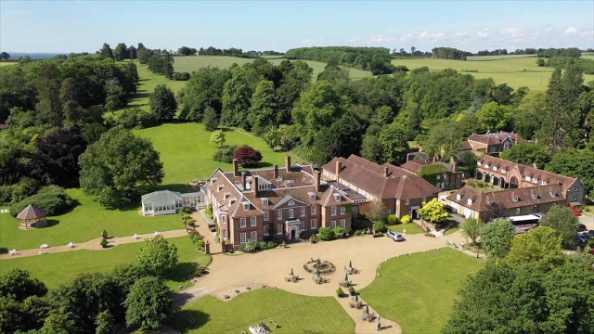
Following some timely refreshments, we boarded our coach ready for departure to the Chapel Down Winery some 45 minutes away. A round of applause was well earned by our driver, as he negotiated some extraordinarily narrow country lanes enroute!

We arrived in good time to start our guided tour at 2:30pm. We left the main courtyard and made our way to the vineyards where we were shown the wide variety of grapes being grown and were very kindly offered a tasting of the corresponding wines.

We then stealthily staggered, or as stealthily as we could in our hi-vis jackets, through their production facilities, finally returning to their very impressive shop where we were able to stock up on further supplies.
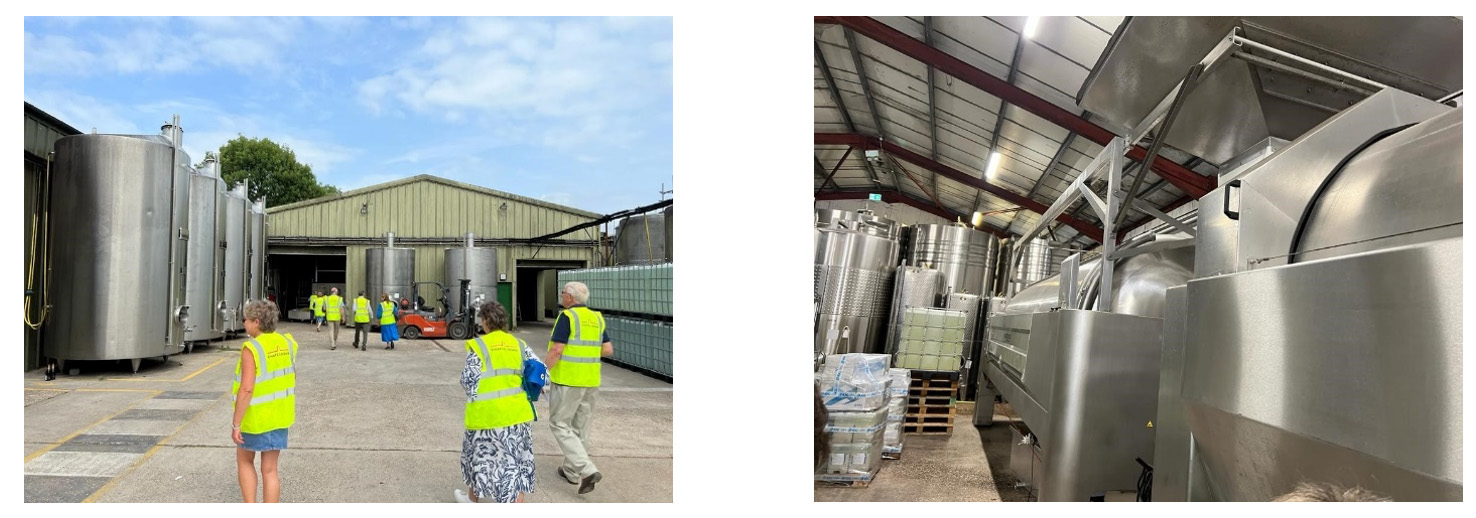
The winery at Chapel Down was truly impressive and their wines are award winning and quite rightly so but, ironically, all of this is only being made possible by the changes in our climate.
We boarded the coach one more time for our return journey to Chilston Park Hotel where we had the opportunity to relax momentarily before reconvening in the Garden Room for champagne and canapes.
We then sat for a tremendous 3 course meal, before retiring to the bar to reflect on the day’s achievements.
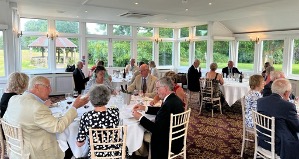
Despite being assured that Day 2 would commence with “breakfast at leisure” we left our very comforting hotel at the ungodly hour of 9:30 am, in the rain and headed for Eastbridge!
The Eastbridge is in the centre of the City of Canterbury and is composed of three adjoining sites and buildings, the Eastbridge Hospital, Greyfriars Chapel and The Franciscan Gardens. The Eastbridge, or The Hospital of St Thomas the Martyr upon Eastbridge, to give it its full name, is not a hospital as we use the word today. It was and is still a hospital in the original sense of the word, a place of hospitality and has been welcoming guests since 1190.
Entry to Eastbridge is via the original Dover to London Road which remains just as congested as its newer counterpart, the A2.
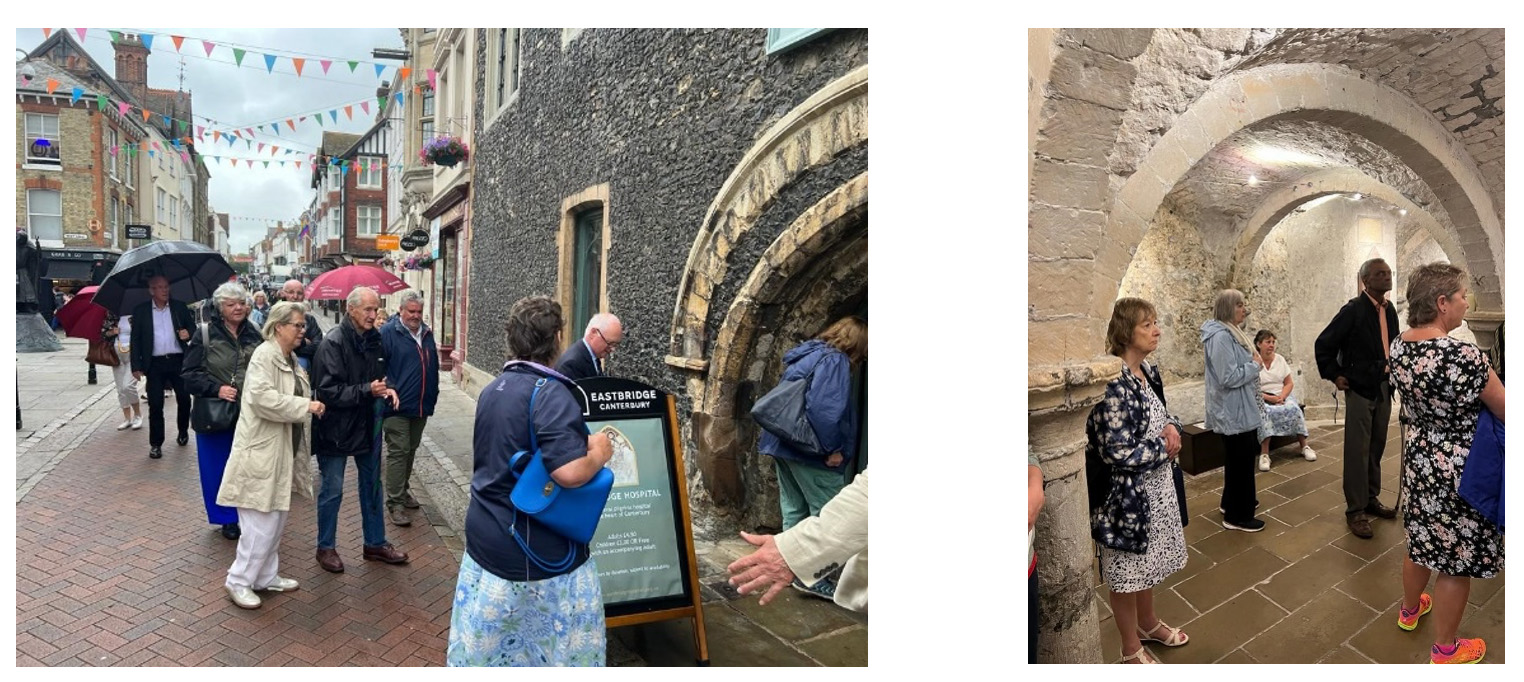
Since its foundation in the 12th century the Archbishop of Canterbury has been the patron of Eastbridge Hopsital which was created in 1180 by a merchant, Edward FitzObold, to provide accommodation for the influx of pilgrims who came to visit the tomb of Thomas Becket, the Archbishop of Canterbury who was murdered in the Cathedral in 1170. For the past 800 years the Eastbridge has given shelter and help to pilgrims, soldiers, local societies and schoolchildren and for the last 400 years it has provided and still provides, a permanent home to a number of elderly people.
Following our visit to the hospital we were fortunate enough to visit the Franciscan Gardens, a short stone’s throw away and relax in the recently replanted Franciscan Gardens. Inspired by the site’s original use as a Franciscan Friary, the gardens were a hidden gem of symbolic planting, peaceful paths and the beautiful Greyfriars Chapel. We walked in the footsteps of the first Franciscans in England and enjoyed this place of gentle contemplation and tranquillity beside the burbling Great Stour river, before returning to the Hospital where the staff had so very kindly laid on lunch for us, accompanied by some very lovely English wine.
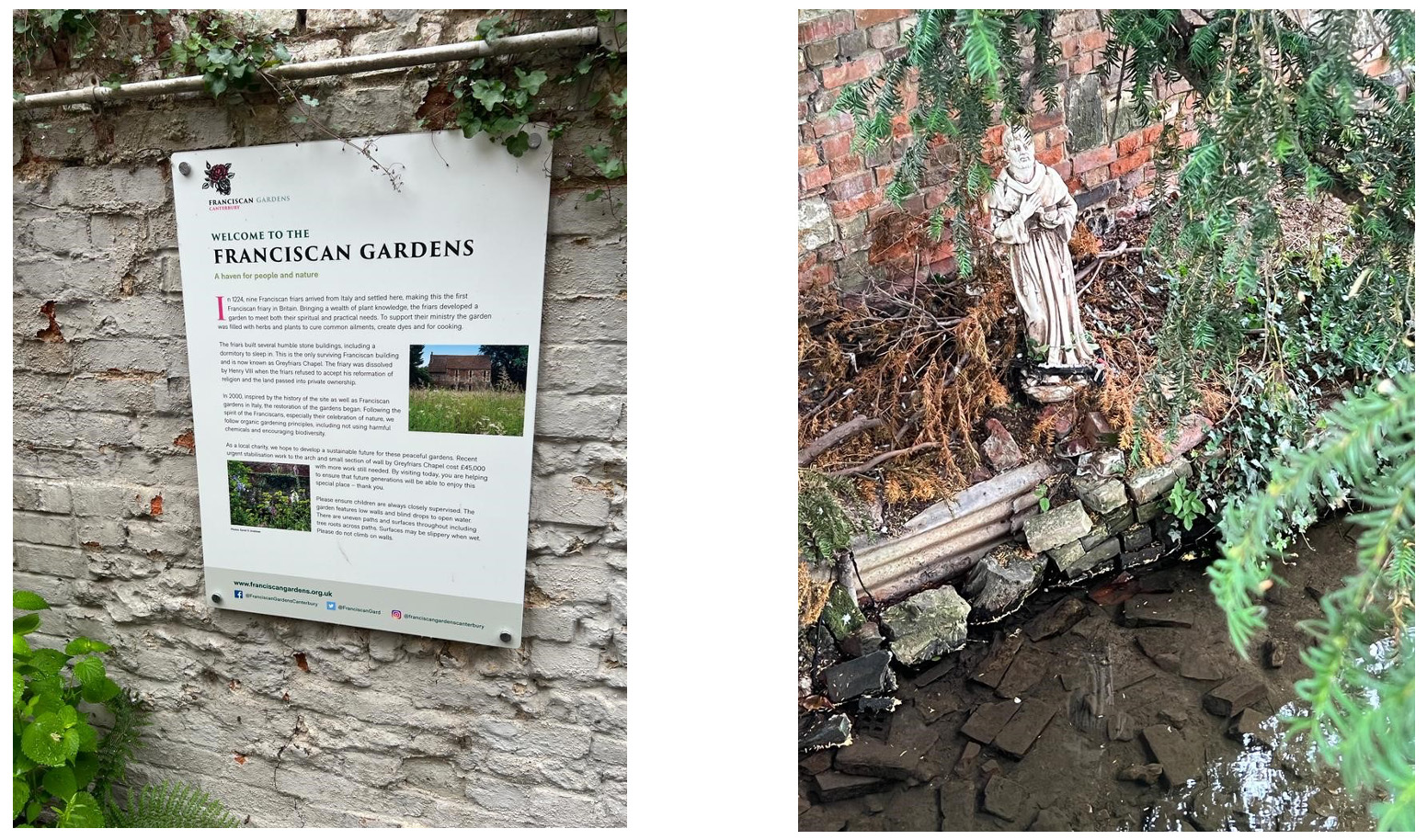
After lunch we commenced our walking tour of Canterbury and made our way to Roper Gate.
The Roper Gate is a decorated 16th-century gateway that once provided an entrance to Place House, home of William Roper and his wife, Margaret Roper, daughter of Sir Thomas More. The gate is a wonderful example of decorative Tudor brickwork. Unfortunately, nothing now remains of Place House beyond the gateway. The gate is a four-centred arch, surmounted by a stepped gable rising in five levels. The gable is pierced with a three-light window, above which is a small roundel window and the gateway is further decorated with diamond 'diapering'.
When Sir Thomas More was executed for treason by Henry VIII, Margaret Roper was granted permission to take her father's head. This head she stored in the Roper family vault in St Dunstan's Church, just a few yards further along St Dunstan Street, where it became a destination for pilgrims, particularly following More's elevation to sainthood in 1935.
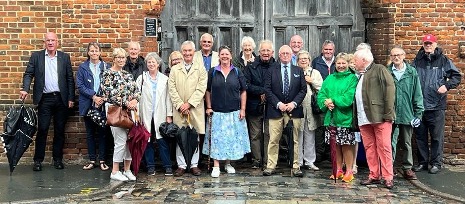
Leaving Roper Gate, we made our way to The Guildhall taking in many of the local sights enroute and in true British style we pushed on through the wind and rain soon arriving at the former Holy Cross Church, which now serves as the Guildhall, where we were greeted by the Lord Mayor, Councillor Jean Butcher and her consort.
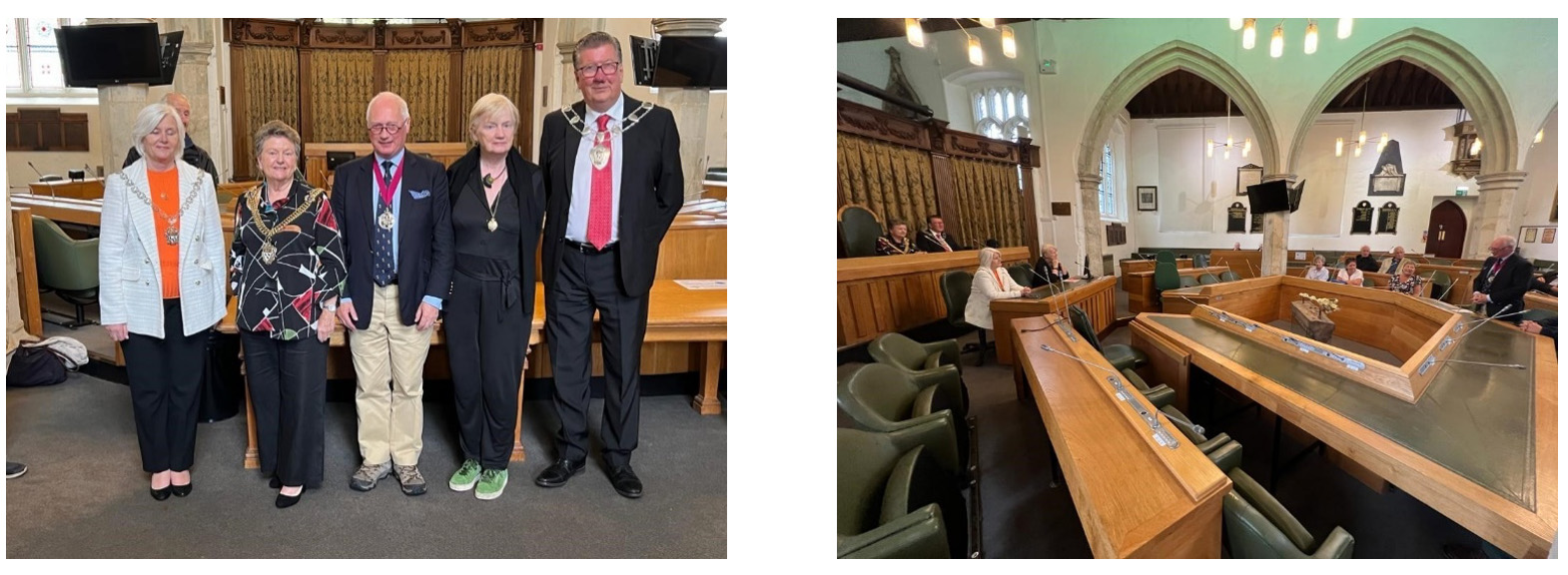
The Master introduced our Livery Company to the Lord Mayor and Christine Rigden gave an overview of the Livery Companies of the City of London. The Lord Mayor replied outlining her duties on behalf of the people of Canterbury.
We bid our goodbyes and proceeded to Canterbury Cathedral taking in more of the local points of interest including interesting period buildings, road signs, riverside gardens and the famous “ducking stool”.
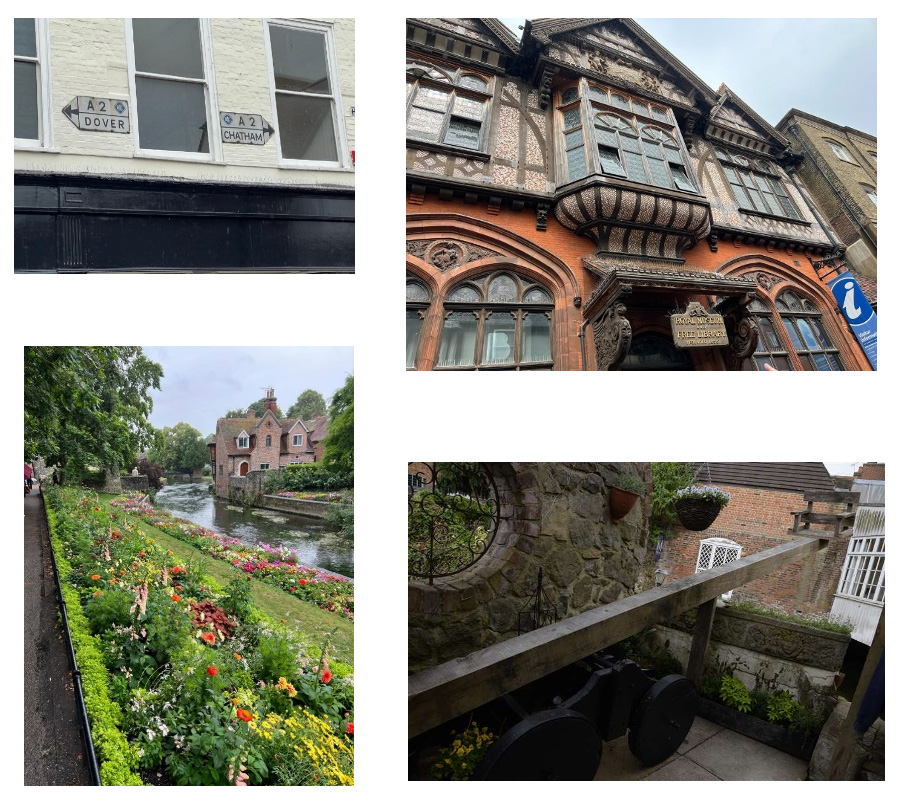
Originally called the cucking stool, or stool of repentance, the device has a long history and was used by the Saxons, who called it the scealding or scolding stool. The stool may also have been used as a penalty and public embarrassment for cheating businessmen and as a more severe punishment for suspected witches. If they drowned, they were deemed innocent, if they survived, they were a witch, either way a bit of a raw deal. However, the most frightening fact of all is that the practice of using these stools only ended in Britain in 1809, which is not that long ago.
For some reason the group moved swiftly past the chair and we soon arrived at Canterbury Cathedral where we took a short break for afternoon tea, before embarking on our guided tour of the site.
Canterbury Cathedral is one of the oldest and most famous Christian structures in England. It forms part of a World Heritage Site. It is the cathedral of the Archbishop of Canterbury, currently Justin Welby, leader of the Church of England and symbolic leader of the worldwide Anglican Communion. Its formal title is the Cathedral and Metropolitical Church of Christ at Canterbury.
Founded in 597, the cathedral was completely rebuilt between 1070 and 1077. The east end was greatly enlarged at the beginning of the 12th century, and largely rebuilt in the Gothic style following a fire in 1174, with significant eastward extensions to accommodate the flow of pilgrims visiting the shrine of Thomas Becket, the archbishop who was murdered in the cathedral in 1170.
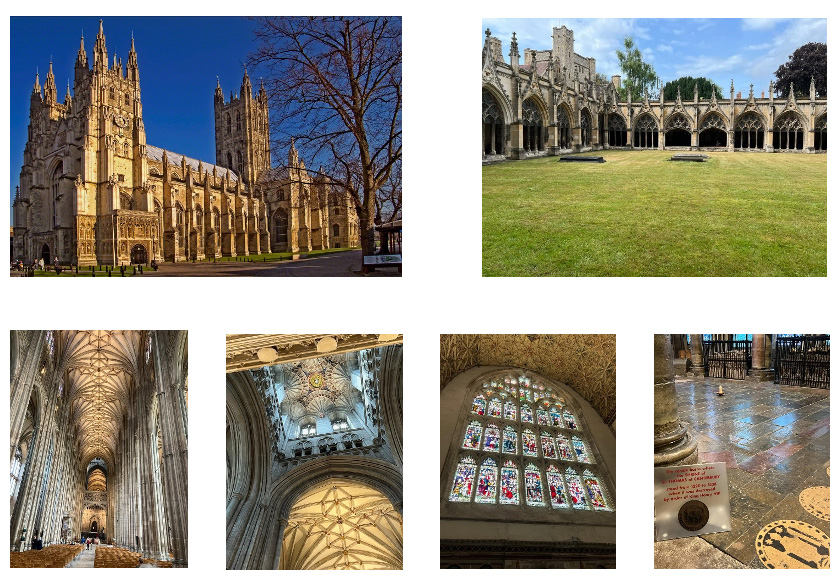
Shortly after the tour had finished, we had the opportunity to stay for Choral Evensong.
As the day begins with Morning Prayer, the day ends with an evening service of prayer and praise, using the traditional language of the Book of Common Prayer accompanied by The Cathedral Choir who sang beautifully.
Dinner this evening was taken at The Corner House Restaurant a short walk from the Cathedral, where we were served some exceptional Kentish produce.
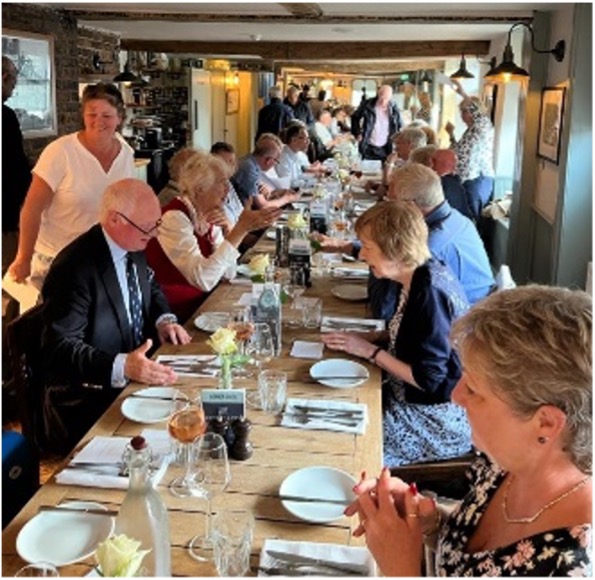
After a long day we returned to our hotel where some of the party fell straight into bed weary from the day, the remainder fell straight into the bar, keen to give the local economy a boost.
After our final breakfast at the wonderful Chilston Park Hotel we made our way to Sissinghurst Castle and more specifically, its magnificent gardens.
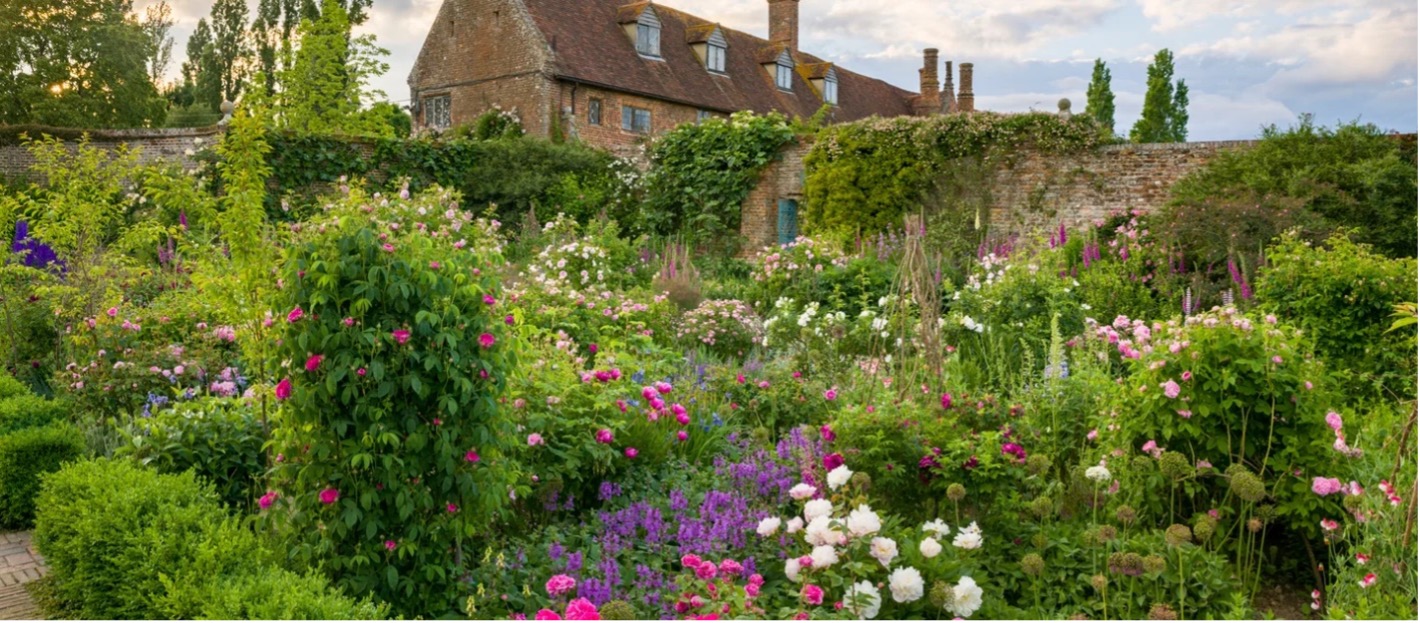 The site that Sissinghurst Castle Garden sits on is steeped in history and was once a Saxon pig farm. It would have been originally called 'Saxenhurst,' with 'hurst' having meant woodland. In the centuries that passed the Tudor buildings were used as a prison for up to 3,000 French sailors who were captured by the British during the Seven Years War, between 1756-63. The sailors referred to Sissinghurst as 'le chateau' hence 'castle' being adopted into its name. An original ink and dye drawing on display in the library gives a remarkable insight into what the Sissinghurst site would have looked like in the 18th century.
The site that Sissinghurst Castle Garden sits on is steeped in history and was once a Saxon pig farm. It would have been originally called 'Saxenhurst,' with 'hurst' having meant woodland. In the centuries that passed the Tudor buildings were used as a prison for up to 3,000 French sailors who were captured by the British during the Seven Years War, between 1756-63. The sailors referred to Sissinghurst as 'le chateau' hence 'castle' being adopted into its name. An original ink and dye drawing on display in the library gives a remarkable insight into what the Sissinghurst site would have looked like in the 18th century.
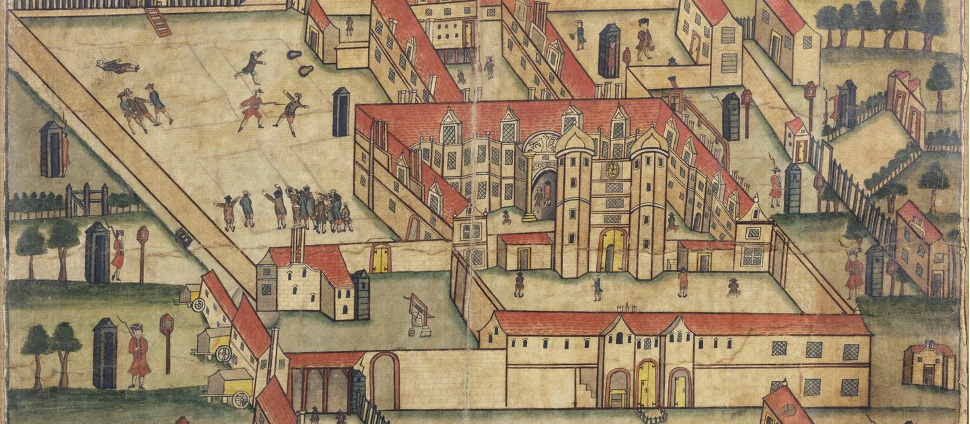
In 1796 the Cranbrook 'Councillors' took out a lease on Sissinghurst from the owners at the time, the Mann-Cornwallis family. This was to be used as a poor house for the able-bodied. Around 100 men were offered housing, employment and food. The owners repaired many of the buildings and their legacy is apparent even today: on the weathervanes you can see the markings MC 1839. The inmates worked the farm, which became profitable, for the local parish. When the estate reverted back to the Cornwallis family in 1855 it was the beginning of a great period of Victorian 'high farming', and the Sissinghurst farm was deemed to be the best on the whole of the substantial Cornwallis estate.
When Vita Sackville-West and Harold Nicolson bought Sissinghurst in early 1930 it looked quite different to the present day. The buildings were used to house farm workers, the current famous garden had yet to be laid out and was mostly used to grow vegetables for the workers. The surrounding farm was growing cereals as well as having well established orchards and hop gardens. None of the buildings were habitable and the grounds were full of rubbish: old sardine tins, cabbage stalks and rusty bedsteads littered the ground. None of this mattered to Vita, who saw its great potential.
Vita loved old roses and at Sissinghurst she finally had the space to indulge in her passion. Her vision was for ‘a tumble of Roses and Honeysuckle, Figs and Vines. Vita was a gifted amateur who gardened instinctively and without the desire for perfection. When it came to planting, she didn’t want to see the soil but vibrant flowerbeds bursting with colour. Harold took a more classical approach to the garden, feeling more comfortable with straight lines that could create a framework for planting. Inspired by the land, Vita and Harold created spaces which provided views for miles around. The result of their work is what you see today, a refuge dedicated to beauty.
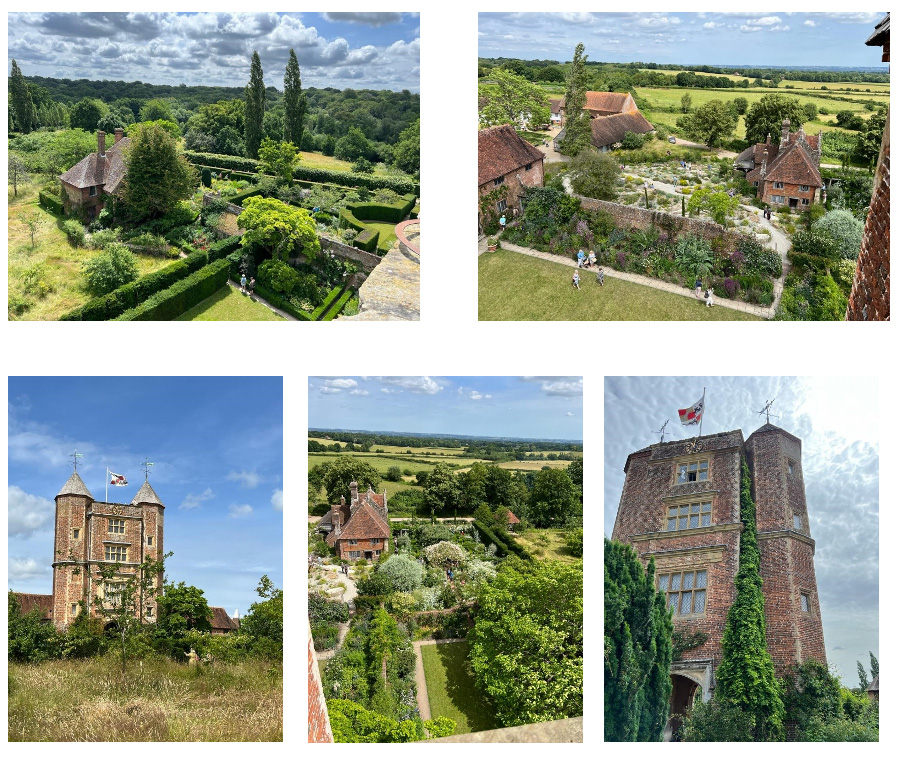
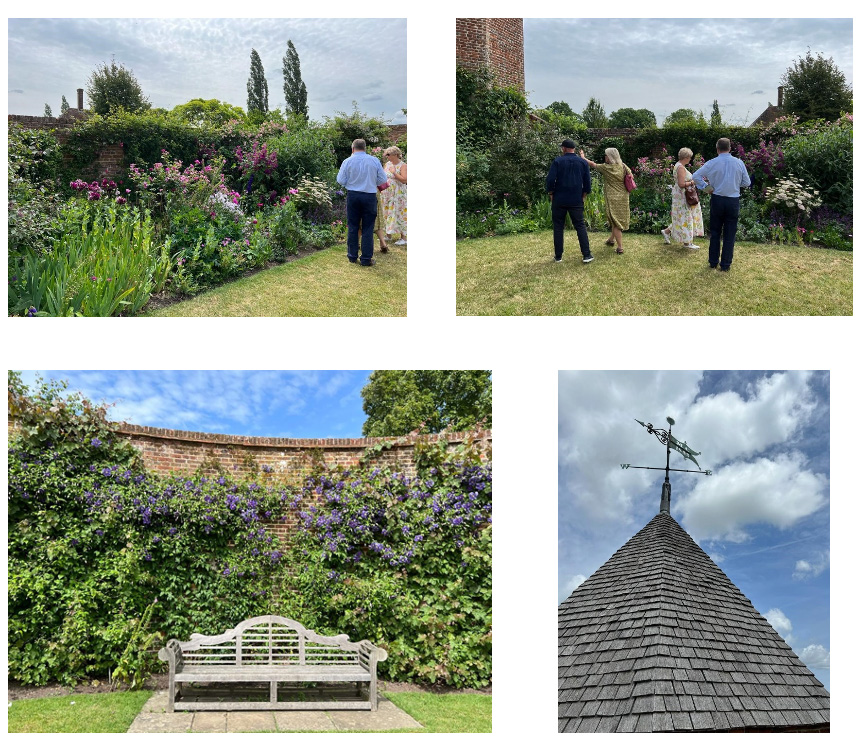
Following our tour of these truly outstanding gardens we retired to the restaurant, housed in the former granary, for lunch. After lunch we all said our goodbyes and journeyed home for a well-deserved rest!
On behalf of all the Company members who attended this year’s Master’s Visit to Kent, I would like to extend our sincere thanks to The Master and Mistress for organising and hosting a truly memorable trip
David White – Court Assistant and Chairman of the Craft Committee (July 2023)
